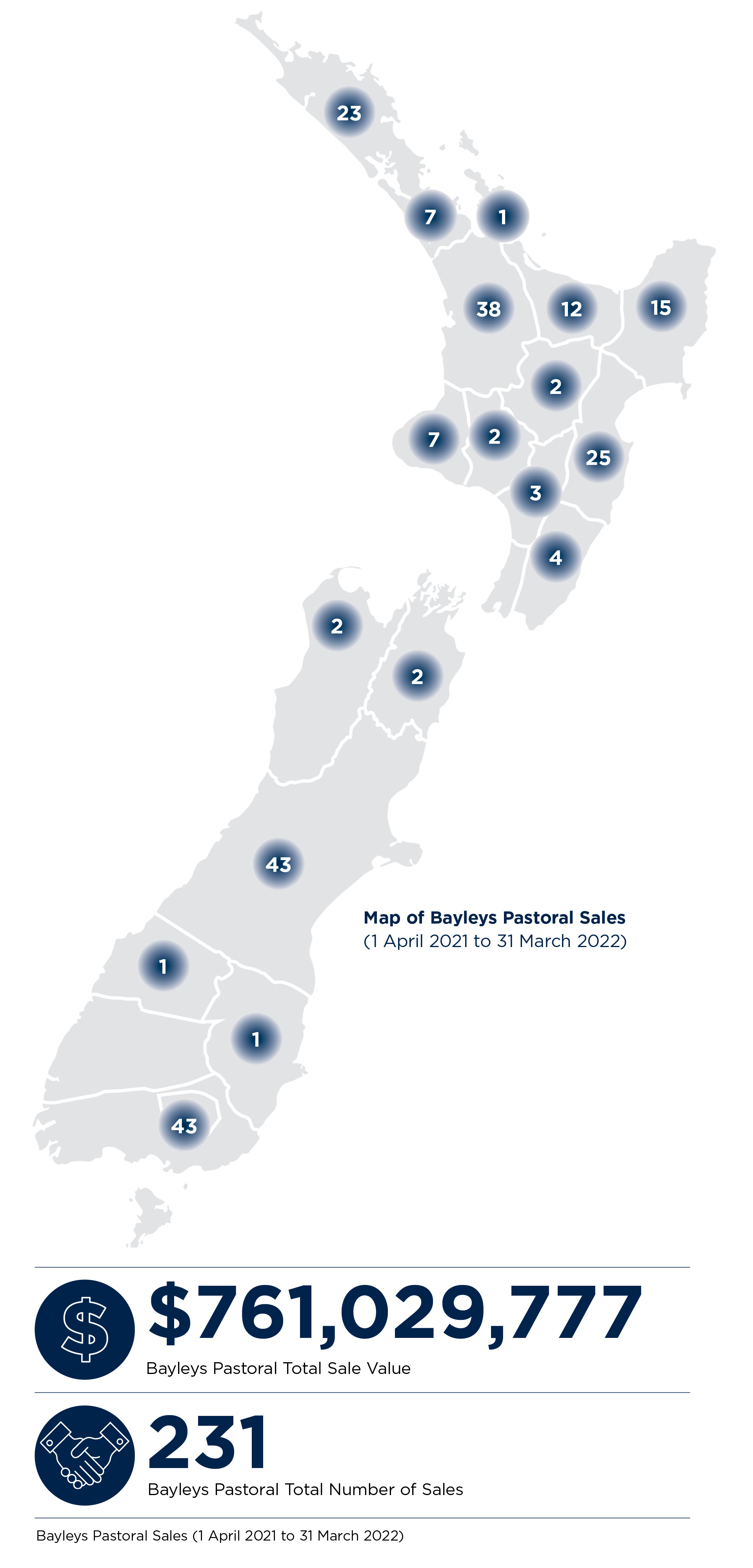Pastoral market update
Given continuing strong commodity markets, farmers in the pastoral sector should have been achieving some of the best financial returns on record, however, increased costs due to escalating inflation, and pandemic-related staffing and supply chain challenges have eroded real returns in the past six months.
With prices of products such as urea, glyphosate, seed and fertiliser increasing to new highs, overall farm working expenses have skyrocketed – especially those with high input systems – meaning earnings before interest and taxes remain similar or worse to years gone by for sheep and beef farmers.
Parts of New Zealand, especially the lower South Island, continue to suffer severe drought conditions, while typically dry parts of New Zealand are seeing the best summer and autumn pasture growth rates in many years.
Autumn conditions have been extreme in some areas. Flooding and significant damage across many farms, and access to remote farms for stock cartage has been a real problem with many roads closed for long periods due to weather events.
We’ve seen farmers with an abundance of feed taking a conservative stocking approach, rather than capitalising on the woes of drought-affected farms and the associated squeezed market.
With the pandemic still fresh in their minds, farmers are looking ahead and considering the implications should freezing works be shut down or be at reduced operating capacity and not be able to sell livestock though winter.
Climatic conditions have continued to frustrate producers this season, particularly for those who just can’t get the stars to align in what’s been a golden period in the commodity markets for New Zealand farming.
Pastoral land values have continued to track upwards, following on from the growth experienced over recent years.
In the past 12 months, we’ve seen record sales achieved across many parts of the country, with values underpinned by the forestry investment sector which has pushed hard for farmland amidst heightening carbon values. Despite differing views among the forestry sector and the sheep and beef community, we are seeing farmers leveraging high land prices to reinvest in other land classes, other sectors, or use their equity to grow their existing businesses.
Proposed government legislation changes, if confirmed, are likely to impact these buyers as amendments are embedded into the marketplace.
With rising interest rates, farmers in strong cash positions are securing either more land or off-farm investments.
Read more...
[Download PDF]Subscribe to receive the latest rural news and insights from Bayleys’ Rural Insight.


